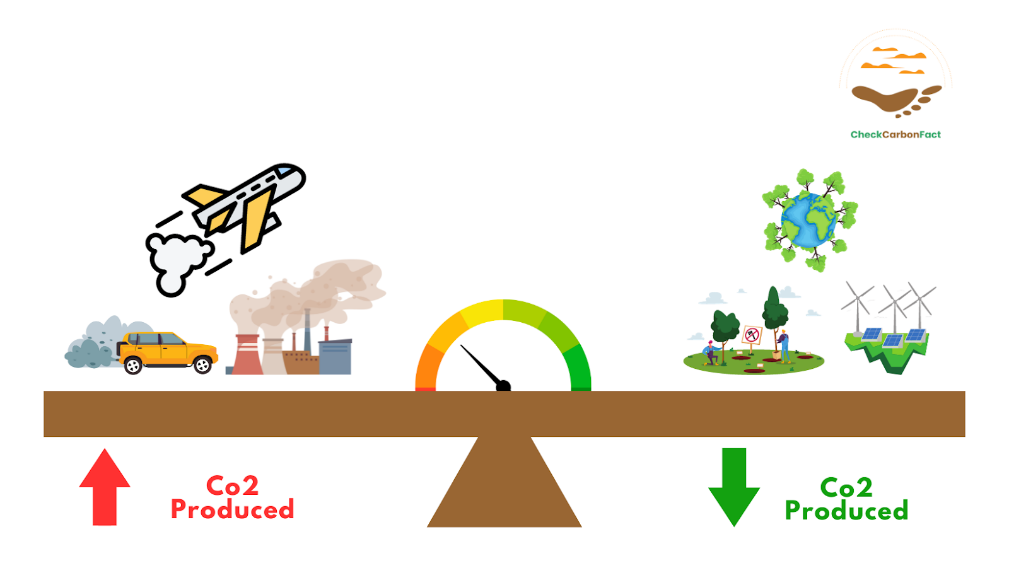Climate change is an escalating concern that has prompted widespread efforts to achieve net-zero emissions. It has become increasingly common for companies and countries to declare their commitment to carbon neutrality. However, amidst the surge of environmental pledges, the question arises: Can any company genuinely claim to be carbon neutral?
To answer this question, we delve into the nuances of carbon neutrality, exploring what it means for a business, the steps involved in achieving it, and the associated costs.
Understanding Carbon Neutrality
Carbon neutrality is a status that implies a company is removing as much carbon dioxide (CO2) from the atmosphere as it emits. It involves the balance between emitted and absorbed carbon dioxide, achieved through mechanisms like carbon capture, storage, and sequestration.
To qualify as carbon neutral, a business must offset its scope 1, 2, and 3 emissions by purchasing carbon credits and implementing plans to reduce emissions. Although carbon neutrality is an achievable short-term goal, attaining net-zero status requires substantial, sustained emission reductions over time.
Achieving this status does not necessarily mean a company has reduced its own carbon emissions; it can offset its emissions by investing in projects elsewhere that reduce an equivalent amount of carbon. Also, a company must not only buy verified carbon credits but also proactively work on reducing its emissions. This reduction is crucial for a business aiming to transition from carbon neutrality to the more ambitious goal of net-zero emissions.
Net-Zero vs. Carbon Neutrality
The terms “carbon-neutral,” “net-zero,” and “climate positive” are often used interchangeably, but they carry distinct meanings in the realm of environmental responsibility. While companies often use the terms interchangeably, there is a nuanced difference between achieving net zero and carbon neutrality. While both concepts share the common goal of mitigating carbon emissions, they represent distinct approaches in the fight against climate change. Understanding the differences between carbon neutrality and Net Zero is crucial for individuals and organizations committed to meaningful climate action.
Carbon Neutral: Balancing the Equation
Carbon neutrality signifies achieving a balance between the carbon emissions a company releases into the atmosphere and the amount it absorbs, either through offsetting or reducing emissions to a net-zero state.
In a carbon-neutral organization, the focus is on evaluating and mitigating CO2 emissions produced as a result of business operations. This involves a commitment to reducing emissions through various strategies and compensating for the remaining emissions by either reducing emissions elsewhere or actively removing an equivalent amount of CO2 from the atmosphere. This balancing act is commonly known as carbon offsetting and can involve initiatives such as tree planting, investments in renewable energy, or bioenergy carbon capture and storage (BECCS).
It should be noted that neutrality typically accounts for CO2 emissions and does not necessarily include other greenhouse gasses in its scope. The approach focuses on achieving a balance within a defined part of business operations.
Net Zero: The Gold Standard for Corporate Climate Action
On the other hand, Net Zero goes beyond the scope of carbon neutrality. In contrast to neutrality, net zero specifically implies that no carbon is emitted in the first place, requiring a company to operate without reliance on fossil fuels or other carbon-emitting sources.
A company committing to Net Zero aims to reduce its absolute emissions across the entire supply chain. The ultimate goal is to align with global targets set to limit temperature increases to 1.5 degrees Celsius, as established in the 2015 Paris Agreement.
Net Zero is hailed as the “gold standard for corporate climate action.” It signifies a holistic approach that extends beyond simply offsetting emissions, focusing on substantial reductions in emissions throughout the organization’s operations and value chain.
The Meeting Point
While Net Zero is considered the pinnacle of corporate climate action, it’s crucial to recognize that both terms play essential roles in the broader context of combating climate change. The choice between carbon neutrality and Net Zero depends on the specific goals and commitments of a company.
The hierarchy of emissions mitigation work spans from avoiding new greenhouse gas emissions to compensating for remaining emissions through actions outside the organization’s value chain. Both carbon neutrality and Net Zero contribute valuable pieces to this comprehensive puzzle, highlighting the multifaceted nature of climate mitigation efforts. In the end, it’s not about one term being superior to the other but rather about integrating both approaches to achieve meaningful progress in the battle against climate change.
Taking Action: Steps to Becoming Carbon Neutral?
Becoming carbon neutral involves three key steps: Measure, Create a reduction plan, and Offset emissions with carbon credits.
Step 1: Measure
The fact is that you can’t manage what you can’t measure. A crucial step towards becoming carbon neutral is by measuring one’s carbon footprint. Businesses must conduct a thorough carbon footprint analysis using methodologies such as the Greenhouse Gas (GHG) Protocol. This process involves collecting specific data on various activities, from electricity usage to business travel, over a specified period. The resulting carbon accounting forms the foundation for any carbon-neutral claim, determining the number of carbon credits required and identifying potential reduction initiatives.
Step 2: Create a Reduction Plan
Measuring emissions provides insights into emission hotspots, enabling businesses to create targeted reduction initiatives. These initiatives could range from investing in renewable energy sources to adopting carbon-neutral practices. A reduction plan is essential for ongoing progress towards net-zero emissions.
Step 3: Offset Emissions with Carbon Credits
The final step involves purchasing carbon credits to offset the remaining emissions. These credits fund projects that remove or prevent carbon in the atmosphere, ultimately balancing the business’s carbon scales. While offsetting is a crucial immediate solution, businesses must not view it as a standalone strategy. Reduction initiatives should concurrently be developed to achieve long-term sustainability.
How Can You Help?
Achieving carbon neutrality is not the work of companies and governments alone. On the contrary, you too can contribute towards global efforts to be carbon neutral, by taking simple actions such as:
- Transportation: To minimize your carbon footprint in transportation, consider opting for more sustainable alternatives. Public transportation, carpooling, biking, or walking for short distances can significantly reduce emissions associated with private vehicle use.
Additionally, transitioning to electric or hybrid vehicles, which have lower carbon emissions compared to traditional gasoline-powered cars, contributes to a greener transportation choice. Furthermore, reducing air travel and utilizing video conferencing or other alternatives when possible helps mitigate the environmental impact of frequent flying.
- Electricity Usage: Transitioning to renewable energy sources is a key step in achieving carbon neutrality. This can involve using solar or wind power for your home, and if feasible, installing solar panels. Furthermore, adopting energy-efficient appliances and light bulbs contributes to a reduction in overall electricity consumption. By embracing these practices, individuals can play a role in promoting a more sustainable and low-carbon energy landscape.
- Water Usage: Conserving water is vital for environmental sustainability. Individuals can contribute by fixing leaks, using water-saving appliances, and adopting mindful water usage habits. In addition to conservation efforts, consider rainwater harvesting systems, which collect and repurpose rainwater for non-potable purposes, further minimizing the demand for traditional water sources.
- Shopping/Fashion: Sustainable fashion attitude such as avoiding fast fashion and embracing slow fashion is key to reducing our carbon footprint. When shopping, opting for second-hand clothing and supporting brands that prioritize ethical and environmentally friendly practices is a crucial step. Choosing quality over quantity and investing in durable items with longer lifespans reduces the need for frequent replacements. By making these choices, individuals contribute to a more sustainable and circular fashion economy.
- Food (Dietary Choices): Dietary choices significantly impact an individual’s carbon footprint. Adopting a more plant-based diet, reducing meat consumption, and choosing sustainably sourced seafood can lower the environmental impact of food production. Supporting local farmers and selecting seasonal produce helps minimize the carbon footprint associated with transportation. Additionally, reducing food waste through meal planning, proper storage, and composting organic waste contributes to a more sustainable
Contributing Towards Carbon Neutrality
While the journey to carbon neutrality is challenging, it’s an essential step towards mitigating climate change. However, the responsibility for carbon neutrality extends beyond companies to individuals. Everyone can contribute by adopting daily routines that reduce carbon emissions, such as altering transportation methods, reducing energy and water usage, making sustainable shopping choices, and adopting plant-based diets. In addition, companies should not only offset emissions but also actively work towards reducing their carbon footprint.
Found it interesting and would like more in the mail?




